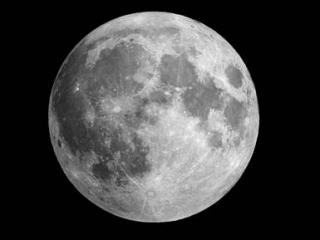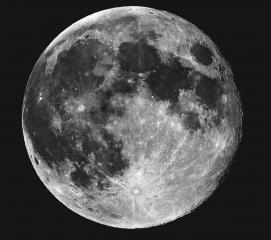The year 2020 will always be remembered for the global COVID-19 pandemic.
But astronomy buffs—and anyone looking for a fun diversion (and who isn’t?)—will celebrate a 2020 blue moon occurrence on Saturday, Oct. 31.
Unless cloudy skies invade, the Halloween night sky promises to light up the town. According to popular culture, the moon will be a blue moon because it will be the second of two full moons in a single month.

“That is not actually its original definition,” said Barton Pritzl, UW Oshkosh associate professor of astronomy. “The original definition depended on the number of full moons occurring during an astronomical season.”
The seasons are defined by the official first days of spring, summer, fall and winter. When there are four full moons in a season (one more than normal), the third full moon of the season is called the blue moon. A seasonal blue moon occurs next summer (Aug. 22, 2021) when four full moons grace the summer skies (June 24, July 23, Aug. 22 and Sept. 20).
The definition most people use today started in 1937 and is the one that depends on two full moons in a calendar month.
Alan Peche, director of Barlow Planetarium on the UWO Fox Cities campus, said the newer definition allows monthly naming conventions to continue.
October’s first full moon will be the hunter’s moon and the second is a blue moon. It will be followed by November’s full moon―called the beaver moon―and the December cold moon.
“The time between consecutive full moons is approximately 29.5 days―or roughly a month,” Peche said. “In fact, the word ‘month’ is derived from the word ‘moon.’”
The last blue moon was March 31, 2018.

Moon watching
The next monthly blue moon will happen in August 2023, however it’s a long wait for the next Halloween Blue Moon―Oct. 31, 2039.
Pritzl is encouraging people to look up at the night sky this Halloween. With a pandemic raging, there seems to be an increasing interest in all things dealing with space.
“I think recent launches by Space X have helped to boost that interest level,” Pritzl said. “I think it could grow more given there likely will be something of a space race to get back to the moon. If that is successful, there will be another one to get to Mars.”
Alan Peche’s Blue Moon Trivia
- What month can’t have a monthly blue moon?
The only month is February since it only has 28 days (29 days on Leap Year). The moon can’t complete a 29.5-day orbit in February. - Is it possible to have two monthly blue moons in a single year?
Yes, a Double Blue Moon can occur, but only if the first blue moon happens at the end of January (allowing the second to occur in late March). The last time a Double Blue Moon occurred was 2018; the next will be in 2037.
- Is it possible to have two monthly blue moons and one seasonal blue moon in a single year?
Yes, but it is very rare. It last happened in 1961 and won’t happen again until 2143 (monthly blue moon on Jan. 30 and March 30; seasonal blue moon Nov. 22).
Learn more:
